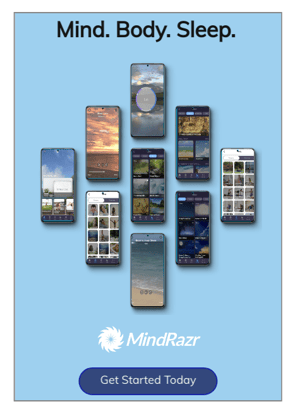The Multi-tasking monster
In today’s modern society, from the moment we wake up, until the moment we go to sleep, our minds are constantly assaulted with information from phones, computers, television and radio. Our life is an endless navigation through social media, technology and electronics. Technology is being used to make us better, faster, stronger, and more advanced that we ever thought possible. We have never been more connected to the world and its vast systems of information; however, we are now so bombarded by information that our wellbeing suffers. Our brains are pushed to capacity limits and more each and every day – and the consequences may be more severe than we realise.
The human mind, however, was designed to focus. Russell Poldrack, a psychology professor at the University of California, states that our brain was not meant to take on different tasks at once. He and other psychologists researched the effects of multitasking, and the results do not bode well for our fast-paced society.

Multitasking and the Brain… Is it a Myth?
Multitasking is the ability to handle the demands of multiple tasks simultaneously. Multitasking can be divided into two subcategories: dual tasking and task switching. Dual tasking involves continuous partial attention, such as surfing the internet while in a class or at work. Task switching, as the name suggests, occurs when we switch our attention from one task to another, like texting while typing an email.
The problem with these strategies is that our brains can only fully process one task at a time. Neuropsychological research has determined that multitasking directly affects the posterior lateral prefrontal cortex, the part of the frontal lobe that is connected to personality, decision-making, and moderation of social behaviours. Neuroimaging studies revealed significant evidence that reaction time slows on the second of even two simple tasks. Furthermore, the mind displays performance impairments when it is required to make more than one decision simultaneously. When we perform any given task, regardless of the speed at which our brain is able to process commands, the interconnected nature of the brain means that it still takes both time and energy for the different parts of the brain to send and receive messages; it does not allow for two different messages to be sent simultaneously.
Limits on human information processing constrain our perception and actions in a multitasking situation. These limitations, or cognitive bottlenecks, temporarily limit operations such as perception encoding (otherwise known as memory creation) and decision-making. Bottlenecks can block awareness of and disrupt decision-making events when undertaken simultaneously. For example, imagine you are texting while in a meeting. The speaker turns and throws you a ball, you miss the catch. Why? Your focus was on completing or reading a text message. Your brain was processing this event first before your perception of the ball could be processed. Scientifically, if we try to take on more than one task at a time, our brain will literally stop us from completing both tasks to the best of our abilities.
Cognitive bottleneck is not the only consequence of multitasking. Psychiatrists who study Attention Deficit Disorder (ADD) recently found those who are consistently distracted, rushed, and lose concentration due to technology, suffer from Attention Deficit Trait, a condition that mimics the symptoms of ADD. While many may not suffer consequences this severe, workers distracted by email and phone calls have shown evidence of an IQ drop twice that of marijuana smokers and, consequently, a serious threat to productivity.
If technology and devices cause this much damage and disruption, why are we so dependent on them? Why can’t we quit paying attention to apps and devices?

Multitasking and Work… Are You REALLY Getting More Done?
Multitasking is the consequence of easy access to information and our tech-obsessed age. Technology allows us to access information easier and faster and has helped create a knowledge-based workforce. This places emphasis on the ability to multitask and use more technology and devices to compete in the labour market.
Modern information technologies are the biggest culprits of divided and limited attention at work. Workers are facing increasing amounts of fragmented and simultaneous activity from numerous gadgets. This leads directly to the need to multitask. Workers feel pressured from changing demands — increasing customer requests, short product life-cycles, and rapid innovation — and are forced to adopt a number of simultaneous projects and provide increased work output in less time.
Advances in information technology allow faster access to information and customers but change the actual structure of organisations. Small businesses today and larger organisations of yesterday rely on one person to make all the important decisions and provide direction for the company and employees. Modern decentralised structures, however, now rely on a team effort and several different leaders to assess and provide direction for an organisation. Decentralised models enable employees to be more involved in each other’s work and management of workers tends to be less specialised and less detailed. The introduction of flexible tools and programmable equipment fosters these organisational structures and allows workers to perform more tasks. For example, many companies used to be divided into department by specialisation, now many companies have teams that work in multiple departments, forcing employees to operate in many different functions and have knowledge over many different tasks. This produces less concentration in one specific area and forces attention to be scattered over many areas. The workplace is designed more around multitasking and less around task specialisation in an effort to generate better results with less lead time.
The workforce is slowly recognising that multitasking and technology may be creating new, unexpected problems. Increases in growth rate and productivity have often been cited as reasons to back multitasking behaviour when research directly contradicts this conclusion. Research indicates distracted workers produce less with more errors, and market and productivity growth may actually be related to a different and unknown factor.
Disruptions to work and tasks have a cost, aptly named Disruption Cost. This is the additional time it takes to reorient back to a task after the interruption is handled. One study found that workers spent 28% of their workday simply responding to IT-related disruptions. Researchers discovered office workers averaged a 25 minute recovery time from interruptions such as phone calls and emails before returning to the original task. These interruptions frequently cause stress which psychologists have defined as technostress, or the inability to adapt or cope with the excessive use of technology in a healthy manner.
Interrupted and fragmented work also takes a toll on employee mental health and well-being. When workers are constantly interrupted and cannot focus on a task, there is less time to complete the task. This creates a change in work rhythms and an increase in errors. The work environment changes to create pressure and stress, which takes a toll on workers and productivity. As workers feel a loss of control and increase in demands, stress levels skyrocket at the threat of company downsizing, loss of job security, and an increase in performance evaluations based on results and outcomes instead of seniority.
The effects of multitasking are seen outside of the office as well. A German study of 132 workers found that checking emails and working outside of work were directly linked to feeling more tired, and less relaxed and content the next day, and an increase in the stress hormone cortisol the next morning. The effect of extended work availability and the importance placed on never missing a work email or phone call significantly impacts the recovery from work; the time we all need to feel detached from work and have control over one’s outside activities. This can disrupt and damage our ability to focus and thrive in the work environment.
While it may feel impossible to control and change the practices and effects inside the office, there are a few simple ways to regain composure and exercise control over your own focus and attention.

Conquering Chaos
One of the most important things you can do to focus is to tune into only one activity at a time. Turn off instant messaging, put your cell phone away, and turn off the television when working or spending time engaging in other activities inside the home. It may feel like your time is less productive but trying to work when it isn’t necessary will only lead to more stress. Let it go. Also, you will not finish tasks faster by doing them together, it is just not possible. Focus and complete one task and then the next, in sequential order; despite contrary beliefs, you can finish things at a quicker pace when focused.
If it is imperative to your job that you be connected and stay in contact outside of normal working hours, check email or messages about once every hour. Take time to complete necessary work tasks away from distractions like television, friends, and family. Take the appropriate amount of time to finish, this will create a less rushed feeling and lead to fewer errors.
Improving your focus and relaxation skills can steel your mind against stress and chaos created by office environments and help you avoid the temptation of unnecessary distractions. Many feel that listening to music while working helps tune-out interruptions and tune-in to the task at hand. Background music can improve concentration, but songs with lyrics tend to pull attention towards music rather than work.
A recent study found eight weeks of meditation training significantly improved work performance and decreased negative emotions associated with work. Meditation improved focus, allowing workers to stay on-task longer and make fewer task switches than those who simply performed relaxation therapy. However, both meditation and relaxation groups improved their memory for the tasks they performed after training. Human attention is trainable, and certain forms of meditation are capable of enhancing attention skills. These skills allow people to concentrate more deeply and to switch between two objects of attention more fluidly.
There are limits to how we focus our attention and how often we can focus on one thing at a time. As we creep towards a completely technology-driven world, we must remember we are still human. Our minds can be trained and programmed, but they cannot be forced to function like the devices we often use. We must listen before we push our limits too far.
Share this
You May Also Like
These Related Stories

How To Manage Stress

Mind, Body & Music : The benefits of music for health and wellbeing





